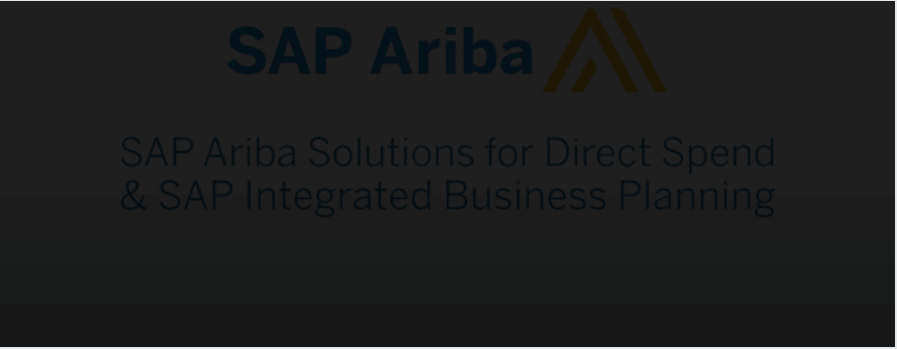Cloud adoption is at an all-time high. Gartner estimates worldwide end-user public cloud spending at $591.8 billion.
The main reason for such widespread cloud adoption is cost benefits. Foundry’s Cloud Computing Study 2023 lists lowering the total cost of ownership as a top driver of cloud computing initiatives.
The cloud delivers on the promises of agility, flexibility and scalability. Enterprises can spin up new environments and resources in double-quick time and scale resources as needed. But for most enterprises, cost savings remain a distant dream.
Many enterprises get a sticker shock when the cloud bill reaches them. They find, to their dismay, that the cloud, far from saving costs, actually increases their operational expenses. Two out of three business executives find that their cloud initiatives have not lowered the total cost of ownership of IT systems.
Enterprises cannot get the expected ROI from their cloud investments due to many reasons.
Many enterprises made a blind rush to the cloud, leading to excess spending and insufficient oversight. They get caught up in the hype and commit to the cloud without proper objectives. They do not undertake the necessary preparatory work either.
Many enterprises manage the cloud like their legacy environment and struggle to enforce controls. Cloud consumption is decentralised. Unlike on-premises data centres, IT teams no longer have tight control over computing resources. Shadow IT is more common, as departments can easily provision cloud accounts bypassing the enterprise IT team.
The complexity of cloud pricing models also plays a part. Cloud service providers offer various services with complex pricing models and billing structures. For instance, AWS has 475+ instance types and over 15 different database types. Multiple tools, points of visibility, and convoluted pricing structures make cloud pricing complex. The more elastic the higher-level services, the less predictable the spending becomes. In the process of securing bargain prices and offers, many enterprises end up subscribing to more resources than they need. Enterprises with a multi-cloud strategy double their overspending and wastage.
FinOps offers a solution to overcome all these challenges and keep cloud costs in check.
What is Cloud FinOps?
Cloud Financial Operations (FinOps) brings together key cloud stakeholders, including business, technology, product, and finance teams, to drive financial accountability and optimise business value realisation through the cloud. The FinOps approach helps businesses better understand the complexity associated with cloud models. It promotes decision-making that improves business value realisation from cloud investments.
The FinOps Foundation lists six guiding elements for the Cloud FinOps framework.
- Collaboration. FinOps requires collaboration among stakeholders to align financial and operational decisions. The development and operations teams collaborate with finance and business-focused teams. They identify waste, draw up strategies for cost optimisation, set budgets, and manage cloud resources.
- Overriding focus on the business value. The Cloud FinOps approach involves making conscious trade-offs between quality, speed and cost. The DevOps team considers the cloud as a vehicle of innovation to make the right trade-offs. The conventional cloud cost management approach considers the aggregate spend. FinOps considers unit economics and value-based metrics. The focus is on the business impact of cloud spending.
- Accountability. Cloud FinOps encourages a culture of cost accountability. The stakeholders are aware of the financial implications of their decisions. Awareness leads to more responsible resource usage and a proactive approach to cost management. Technical teams consider cost as an efficiency metric when making spending decisions.
- Accessible and timely data. The success of Cloud FinOps depends on the availability of real-time relevant data and transparency. Real-time visibility on cost data, available across the board, drives better cloud utilisation. Fast feedback loops improve decision-making and promote efficient utilisation of cloud resources. Data on internal and industry-level benchmarking promotes the adoption of best practices.
- A centralised team to drive FinOps endeavours. A dedicated FinOps team with representatives from each functional area ensures goal alignment. All stakeholders remain aligned towards the same goal. FinOps team members need analytics skills to anticipate demand and estimate unit economics for cloud usage.
- Leveraging the variable cost models of the cloud. The cloud FinOps approach embraces just-in-time prediction and agile, iterative planning approaches. These approaches make it easier to avail of variable pricing models offered by cloud providers.
How to Implemenet FinOps
Implementing FinOps involves three broad iterative phases.
Inform
The first stage of the FinOps journey is “inform.” Here, the focus is to improve visibility and transparency into cloud costs and usage.
Cloud resources get provisioned and de-provisioned on demand. Such a dynamic environment leads to huge fluctuations in costs. Deep and comprehensive visibility into cloud expenditure pinpoints overspending. All stakeholders understand the cost implications of their decisions and actions. They can take corrective actions in near real-time.
The Cloud FinOps approach uses tools and practices to track and analyse costs. The key practices include:
- Setting up cost allocation tags.
- Producing accurate chargeback reports. Chargeback models allocate the cost of its shared cloud services to end consumers.
- Creating data collection pipelines to gather cloud optimisation metrics. Co-opting machine learning makes it easy to spot irregularities and unearth cost-saving opportunities.
- Setting up dashboards to ensure real-time reporting.
- Trending and variance analysis that make explicit reasons for cost increases.
- Creating forecasts to understand future costs.
Most cloud vendors offer daily or hourly reports on cloud costs and also provide recommendations for lowering costs. But tracking costs using such vendor-specific reports becomes difficult in a multi-cloud environment. FinOps teams audit the entire environment. Integrated analytics tools cover all the deployed solutions or even planned deployments. These tools can also drill down the analytics to the department, project, or unit level. DevOps teams can use the insights to tweak the existing environment for improvements. They can also rejig service providers for improved savings.

Optimise
The second phase in the FinOps journey is the “optimise” phase. Here, the focus is to identify opportunities to reduce waste and improve efficiency. FinOps makes explicit the financial implications of feature development and product changes. Developers can use such financial information to make near-real-time decisions to optimise costs. They can optimise features for cost in the same way they tune for performance or uptime.
FinOps teams:
- Right size resources or services to match workload requirements. The overriding approach is to strike the right balance between performance and cost efficiency.
- Identify and eliminate underutilised or idle assets and resources. Analysing resource utilisation data and performance metrics makes identifying and eliminating waste easy.
- Utilise discounts available through reserved instances and other plans. Automated cloud management tools improve resource utilisation.
Operate
The third and final phase of the FinOps journey focuses on the operational efficiency of a cloud environment. It includes implementing policies and governance structures to control costs. Key interventions include:
- Scaling resources using automation technology.
- Continuous monitoring and managing of the environment to identify and resolve cost-related issues. FinOps tools allow setting budget thresholds and monitoring cloud spending against such thresholds. Stakeholders get real-time alerts or notifications on nearing limits. Such a proactive approach ensures timely actions and adjustments to prevent budget overruns.
There is no one-size-fits-all solution, though. Implementing FinOps practices is an iterative process. The FinOps team has to make regular interventions based on the specific needs of the business.
Implementing FinOps reduces day-to-day operational costs and makes cloud costs predictable. Companies utilising FinOps could lower their cloud expenses by up to 20-30%.
Platforms such as Informatica bring clarity and order from the chaos usually associated with data and make implementing FinOps easy. Informatica intelligent data management cloud, powered by the Claire AI engine and developed using open standards, offers a consumption-based pricing model and makes data management easy.












